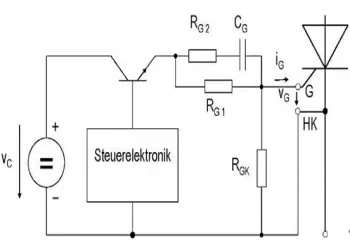I. Introduction
Shenzhen Mingyuan Construction Technology Co., Ltd. is mainly engaged in technical research on concrete 3D printing, including the research, development and sales of concrete printing services, concrete printing equipment and concrete printing materials. Our company has large-scale printing equipment, adapted printing materials and printing control software with completely independent intellectual property rights. The printing speed and accuracy are at the leading level in the country, whether it is construction or construction.
Whether it is construction engineering or artistic modeling and other component molding, we have more practical manufacturing experience. Nano-foam concrete is a new type of building material newly developed by our company. It can be used as concrete 3D printing ink, can also be preformed into lightweight foam sheets, and can also be used in the field of cast-in-place concrete.
2. Principle of inorganic nano foam concrete
Nano-foamed concrete uses nano-inorganic foaming agent as the main core raw material. The foaming principle of nano-inorganic foaming agent is physical foaming. Compared with ordinary foaming agents, it has the advantages of low foam density, small foam size, high foaming multiple, good foam stability, and no settlement during pouring. It can be used in cement slurry. Nanoparticles that form tiny pores in the foam stabilize the foam. When the nano-foam is added to the cement slurry and compared with the foam produced by the American GRACE Group under the same formula conditions, when foam concrete with the same density of 450 kg/m3 is formed, the pore size of the nano-foam concrete is six times that of the American GRACE foam concrete. One, 2.5 times stronger.
- Advantages of inorganic nano-foam concrete
Relying on the new nano-foaming agent, nano-foam concrete can achieve higher strength at the same density level or lower density at the same strength level than ordinary foam concrete. The traditional foam concrete currently on the market has problems such as unstable quality, uneven density, and uncontrollable strength, which has led to many problems in actual engineering applications, such as sinking after pouring, insufficient design height, insufficient strength, and surface peeling. Powder, etc., and the amount of cement is large, which cannot truly play the role of energy saving and emission reduction. Inorganic nano-foam concrete is a nanoparticle-stabilized foam that forms tiny pores in the cement slurry. The product has stable quality and excellent performance, overcoming all the shortcomings of traditional foam concrete. Inorganic nano foam concrete has the following excellent properties:
1. Lightweight: The dry density of foam concrete is 200-1200kg/m3, which is equivalent to 1/2-1/10 of dry ordinary concrete. Foam concrete with different densities is produced according to different parts of the building and is used in non-load-bearing parts and load-bearing parts. It can obviously reduce the weight of building and improve the bearing capacity of the components.
2. High strength: The strength range of foam concrete is generally 0.2-20.0Mpa. The strength corresponding to the dry density is produced according to different parts of the building and the load-bearing requirements. Compared with the same lightweight materials, the strength can well meet the needs of the building structure. , the relationship between commonly used strength and dry density can refer to the foam concrete standard.

3. Thermal insulation: Foam concrete contains a large number of small closed gaps and has good thermal properties. The general thermal conductivity is 0.06-0.3w (m.k). As a roof insulation and floor insulation material, it has good thermal insulation and energy-saving effects. .
4. Sound insulation: Foam concrete is a porous material with good sound insulation properties.
5. Self-supporting and self-compacting after curing: Foam concrete is pumped fluid concrete. It flows by itself after pouring and is naturally dense after solidification. It does not need to be vibrated or tamped. It forms automatically and has no lateral pressure on other loose objects.
6. High flow: The fluidity of foam concrete is 180±20mm, the horizontal transportation of the hose can reach 1000m, and the vertical transportation of the hose can reach 120m.
7. Low elasticity and earthquake resistance: The elastic modulus of foam concrete has a good linear relationship with the compressive strength. It has a low elastic modulus and good absorption of impact energy. It does not cause overall damage after external force causes large deformation. , improve the stress of the structure.
8. Fire prevention: Foam concrete is a cement product, inorganic material, and completely flame retardant.
9. Durability: Foam concrete is a cement-like material with the same lifespan as cement, stable performance, and a shelf life of more than 50 years. It has the same lifespan as the main body of the building and has excellent durability.
10. Wide range of materials: The main materials of foam concrete are cement, water, foaming agent, etc., which are easy to obtain. 11. Fast construction: Foam concrete is foamed on-site, transported by hoses, and poured directly. Depending on the size of the project, 20-120m3/hour equipment can be used, and the daily project volume can reach 200-1200m3, saving construction period.

Application
- Lean concrete filling layer
Foam concrete is highly workable and adaptable due to the use of flexible hoses, so it is often used for lean concrete fill. If the requirements for thermal insulation are not very high, use a lean concrete filling layer with a density of around 1200kg/m3 and an average 0.05m thickness; if the requirements for thermal insulation are very high, use a lean concrete filling layer with a density of 500kg/m3, the average thickness is 0.1-0.2m.
- Insulation of pipelines and thermal equipment
At present, the domestic demand for thermal insulation materials for thermal pipelines and thermal equipment is 2.5 million m3/year, and one power plant alone consumes 20,000-50,000 m3 of insulation materials.
The demand for insulation materials for heating pipes and factory heating pipes in northern winter is even more alarming. The current leading product, mineral wool-based inorganic fiber, makes people’s skin itch, is highly absorbent, and is expensive. It is in urgent need of replacement. Foam concrete will also make a difference in this regard.

- Cold storage insulation
Foam plastics are now used for cold storage insulation. Because foam plastics are prone to aging, shrinkage and flammability, developed countries have switched to foam concrete pouring or masonry insulation layers, and China has also begun to replace them. It mainly uses integral cast-in-situ foam concrete for the roof, walls and floor, with no cold bridges or gaps.
- Industrial furnace insulation
Its main products are refractory insulation bricks. In order to reduce energy consumption in large industrial furnaces such as steel plants, glass plants, ceramic plants, non-ferrous metal smelting plants, and cement calcining kilns, a layer of insulating refractory bricks must be built outside the refractory bricks. In the past, floating bead bricks and alumina foam bricks were mostly used, which were extremely expensive. China has begun to use foam concrete refractory bricks to replace high-priced traditional products.
- Outdoor sound-absorbing materials (road and railway sound-absorbing barriers)
The market for foam concrete outdoor sound-absorbing materials is mainly sound-absorbing barriers on both sides of highways and railways. China will vigorously develop railways and highways in the future, and there will be a demand for at least 30 million m3 of sound-absorbing barriers. At present, the sound-absorbing barriers used on roads are mainly wood chip cement boards and foam glass boards.
The former has a very low sound absorption coefficient, cannot meet the needs of high-speed railways, and is not beautiful. The latter is too expensive. Foam concrete has good sound absorption properties and can meet any road sound absorption requirements, but the price is very low.

- Indoor wall sound absorption
Indoor sound absorption includes sound-absorbing ceilings and sound-absorbing walls. Foam concrete has a great market advantage in wall sound absorption. Compared with fiber sound-absorbing panels such as rock mineral wool, it does not have the disadvantage of being itchy when cutting and installing, and has good strength and low price. This product will have a huge market in subway walls, as well as in large shopping malls, station waiting rooms, theaters, conference halls and other building walls.
- Foam concrete used for energy-absorbing protection in airports and racetracks has extremely strong impact resistance. Ordinary concrete can be smashed with a sledgehammer, but foam concrete is difficult to break. Taking advantage of its energy-absorbing properties, foreign countries have developed and A number of high value-added products are used, such as airport safety protection foam blocks, racing track safety protection foam blocks, highway accident-prone area safety protection foam blocks, etc. When airplanes or cars rush out of the runway or road due to loss of control, they enter the emergency room. Foam block protective tape, due to the impact-absorbing properties of foam blocks, stops and protects aircraft or vehicles from damage.

- Application of anti-seepage and waterproof functions
Closed-cell foam concrete is hydrophobic and creates a lotus leaf dewdrop effect when dripping water, so it has excellent resistance to seepage and water.
Pouring or laying foam concrete in all important waterproof parts of the building, such as floors, basements, bathrooms, etc., can eliminate the need for waterproofing agents and achieve permanent waterproofing, overcoming the shortcomings of easy peeling off and failure of waterproof coatings, and using it to replace waterproof materials with low cost. Longer life and more competitive.
In water conservancy projects such as canals, pools, water towers, swimming pools, underground military projects, tunnels, embankments, fish ponds, artificial lakes, etc., foam concrete can be used for masonry or pouring, eliminating the need for all waterproof materials. It is both a structural Material, and waterproof materials have great advantages.
- Anti-chloride ion corrosion in underground and water projects
In dirt or water with high chloride ion web content, the structures, foundation heaps, bridge piers, etc. of concrete tasks may be harmed by chloride ions. Suppose a safety layer of foam concrete is constructed or soaked the outside of these engineering structures, given that the foam concrete is impermeable to water. In that case, chloride ions will not be lugged by water and rust the concrete.

Supplier
TRUNNANO is a supplier of foaming agents and relative concrete materials with over 12 years experience in nano-building energy conservation and nanotechnology development. It accepts payment via Credit Card, T/T, West Union and Paypal. Trunnano will ship the goods to customers overseas through FedEx, DHL, by air, or by sea. If you are looking for high-quality concrete additives, please feel free to contact us and send an inquiry.





